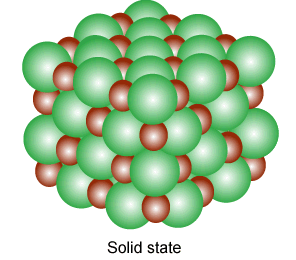Find the density of a given molecule (solid state).
Find the density of a given molecule (solid state).
Solution and Explanation
To find the density of a solid-state molecule:
Density (\( \rho \)) is a physical property that describes how much mass is packed into a given volume. To calculate the density of a solid-state molecule, you need to know two key pieces of information:
- The molecular weight of the molecule.
- The volume of the solid-state molecule.
Density formula:
The density (\( \rho \)) of a substance is defined as its mass (\( m \)) divided by its volume (\( V \)), which is expressed mathematically as:
\( \rho = \frac{m}{V} \)
Step 1: Measure or obtain the mass of the molecule.
The mass can be determined in two ways:
- By directly weighing the sample using a balance or scale.
- By calculating the mass from the molecular weight (if you know the number of molecules in the sample). The molecular weight gives you the mass of a single molecule, and by multiplying it by the number of molecules present, you can find the total mass.
Step 2: Measure or obtain the volume of the solid-state molecule.
The volume of the molecule can be determined using different methods:
- By measuring the volume directly using displacement techniques (such as water displacement for small solid objects).
- If the molecule is a regular solid (e.g., a cube or sphere), its dimensions can be used to calculate the volume (e.g., using the formula \( V = l^3 \) for a cube or \( V = \frac{4}{3} \pi r^3 \) for a sphere, where \( l \) is the side length and \( r \) is the radius).
Step 3: Ensure consistent units.
Before calculating the density, make sure that the units for mass and volume are consistent. Typically, mass is measured in grams (g) and volume in cubic centimeters (cm³) for solid-state molecules, but you should adjust the units if necessary (e.g., kg for mass and m³ for volume in SI units).
Step 4: Calculate the density.
Once you have the mass and volume, you can calculate the density using the formula:
\( \rho = \frac{m}{V} \)
For example, if the mass of the molecule is 10 grams and its volume is 5 cm³, the density would be:\( \rho = \frac{10 \, \text{g}}{5 \, \text{cm}^3} = 2 \, \text{g/cm}^3 \)
Note: If you have a specific molecular weight and volume for the solid-state molecule you're interested in, feel free to provide those values, and I can help you with the detailed calculation of its density.
Top Questions on The solid state
- A metal crystallizes in simple cubic lattice. The volume of one unit cell is \( 6.4 \times 10^{-7} \, \text{pm}^3 \). What is the radius of the metal atom in pm?
- AP EAPCET - 2025
- Chemistry
- The solid state
- A metal crystallises in two cubic phases, fcc and bcc with edge lengths 3.5 Å and 3 Å respectively. The ratio of densities of fcc and bcc is approximately
- TS EAMCET - 2025
- Chemistry
- The solid state
- The percentage of free space in a body-centred cubic unit cell is
- Bihar Board XII - 2025
- Chemistry
- The solid state
- How many kinds of Bravais lattice are possible in a crystal?
- Bihar Board XII - 2025
- Chemistry
- The solid state
- The number of atoms present in body-centred cubic unit cell is
- Bihar Board XII - 2025
- Chemistry
- The solid state
Concepts Used:
Solid State
Solids are substances that are featured by a definite shape, volume, and high density. In the solid-state, the composed particles are arranged in several manners. Solid-state, in simple terms, means "no moving parts." Thus solid-state electronic devices are the ones inclusive of solid components that don’t change their position. Solid is a state of matter where the composed particles are arranged close to each other. The composed particles can be either atoms, molecules, or ions.

Types of Solids:
Based on the nature of the order that is present in the arrangement of their constituent particles solids can be divided into two types;
- Amorphous solids behave the same as super cool liquids due to the arrangement of constituent particles in short-range order. They are isotropic and have a broad melting point (range is about greater than 5°C).
- Crystalline solids have a fixed shape and the constituent particles are arranged in a long-range order.